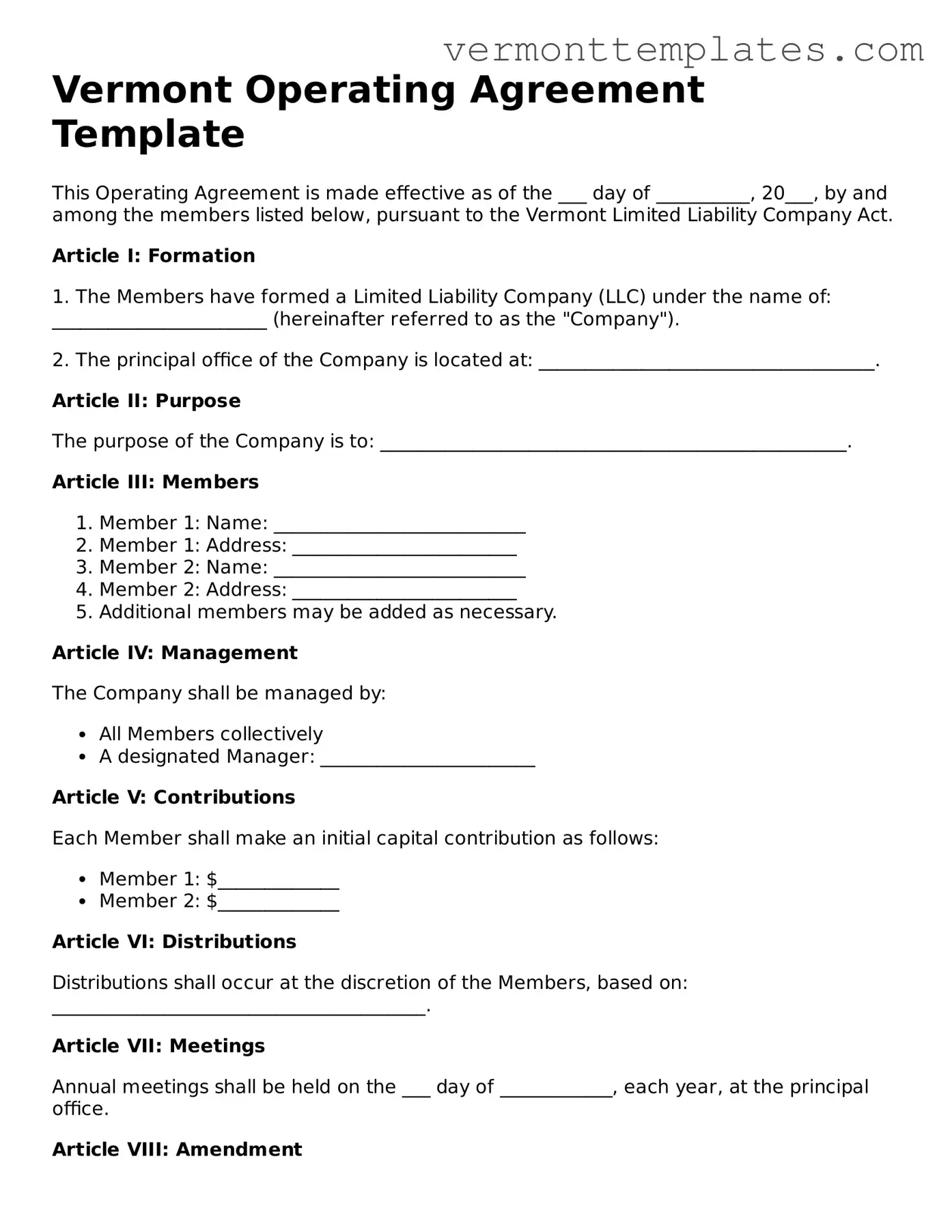Vermont Operating Agreement Template
This Operating Agreement is made effective as of the ___ day of __________, 20___, by and among the members listed below, pursuant to the Vermont Limited Liability Company Act.
Article I: Formation
1. The Members have formed a Limited Liability Company (LLC) under the name of: _______________________ (hereinafter referred to as the "Company").
2. The principal office of the Company is located at: ____________________________________.
Article II: Purpose
The purpose of the Company is to: __________________________________________________.
Article III: Members
- Member 1: Name: ___________________________
- Member 1: Address: ________________________
- Member 2: Name: ___________________________
- Member 2: Address: ________________________
- Additional members may be added as necessary.
Article IV: Management
The Company shall be managed by:
- All Members collectively
- A designated Manager: _______________________
Article V: Contributions
Each Member shall make an initial capital contribution as follows:
- Member 1: $_____________
- Member 2: $_____________
Article VI: Distributions
Distributions shall occur at the discretion of the Members, based on: ________________________________________.
Article VII: Meetings
Annual meetings shall be held on the ___ day of ____________, each year, at the principal office.
Article VIII: Amendment
This Agreement may be amended only by a written agreement signed by all Members.
Article IX: Miscellaneous
This Agreement shall be governed by the laws of the State of Vermont. Any necessary legal proceedings relating to this Agreement shall be adjudicated in a court of competent jurisdiction in the State of Vermont.
IN WITNESS WHEREOF, the Members have executed this Operating Agreement as of the date first above written.
_________________________ (Member 1 Signature & Date)
_________________________ (Member 2 Signature & Date)
_________________________ (Additional Member Signature & Date)
This template serves as a starting point to help you draft your Operating Agreement. Each section can be adjusted based on your unique business needs. Please consider consulting with a legal advisor to ensure that your agreement is comprehensive and compliant with Vermont laws.
